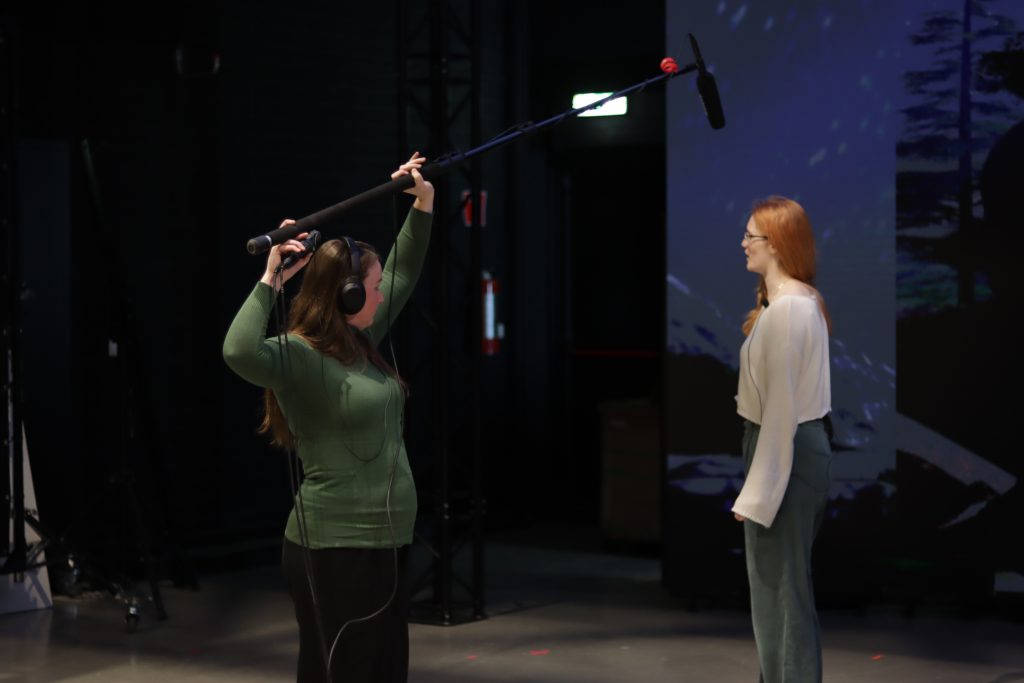Introduction
Recording audio is a complex process that requires careful attention to detail. Audio recording demands finding the right settings, minimizing background noise, and determining the optimal microphone placement. The acoustics of the room play a crucial role in this process, with challenges such as reverberation, background noise, and acoustic dead spots often requiring thorough testing to identify. Because of these complexities, the goal of this research was to uncover the acoustic challenges within the XR stage at BUas, aiming to improve the overall sound quality for immersive production environments.
Testing
To gather initial data on the acoustic challenges within the XR stage, various existing methods were employed. This involved using a clapperboard, a balloon, and a PA system to test reverberation, as well as the Open Sound Meter to measure the magnitude of outside frequencies. Additionally, a silent reading of the room was conducted to assess background noise levels. With the help of a participant, the effects of a person’s voice on the reverberation spots were tested. The same environment and conditions were maintained throughout these tests to ensure consistency and reliability. All details of the methods and the experiment are thoroughly described in the research paper.

Results
The data analysis revealed that the XR stage at BUas maintains a stable and controlled environment for high-quality audio recordings. The Open Sound Meter test showed consistent sound levels with a minor low-end spike, indicating uniform acoustic behavior. The impulse test highlighted variations in reverberation, especially around the LED volume, pinpointing areas with increased reflections and potential dead zones. The silent reading test confirmed low background noise levels, essential for clear audio capture.
To simplify understanding the acoustics, Anouk created a guide outlining the main issues and practical suggestions. This guide was tested by students of different experience levels, who provided feedback through a survey. This process ensured the guide’s usability and clarity, making it a valuable tool for optimizing sound quality in various recording scenarios.

